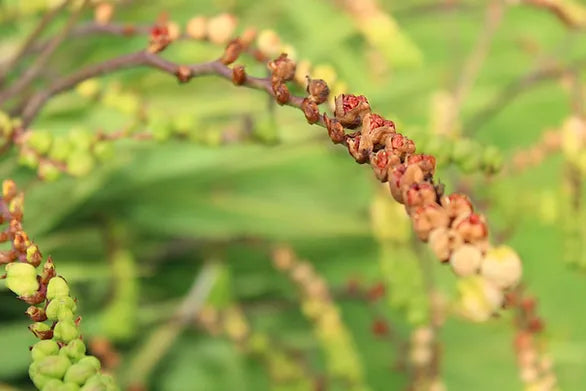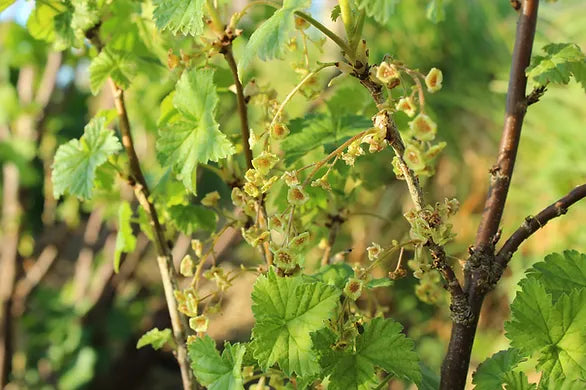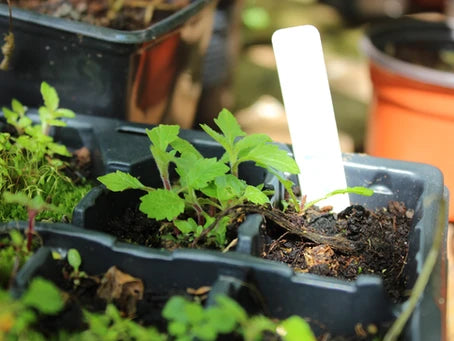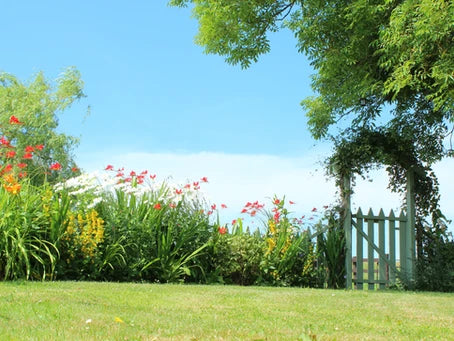A Bamboo Takeover - Gardening With Pleioblastus Variegatus
If you have already read the previous blog post, The Rockery Garden – Est. 2003, you know all about the reasons behind the plants we chose for this flower bed.

But now let’s talk about the lessons learned along the way.
The species originally planted were a very good choice for their purpose apart from one.
One plant in this garden was a big mistake. One we have learned from and will not repeat.
Bamboo…
Pleioblastus variegatus, or Dwarf whitestripe bamboo to be specific.

What began as a small clump of this beautiful leaf, over time spread throughout the entire bed causing damage to many of the herbaceous perennials. In a case of survival of the fittest, the bamboo trumped most plants and used up all the nutrients and soil space leaving us with little to no colourful blooms in the bed year after year.
In 2021 during the first lockdown, we decided to tackle the bamboo. Our first lockdown garden project was to eradicate this invader once and for all.
Bamboo travels by rhizomes, which are a network of underground shoots. This meant that simply pulling the stems from the soil was not going to solve our long-term issue of the continually spreading plant.

Instead, we had to lift each rock from the surface one by one and place it onto the driveway.
Now factor in the issue that these rocks were in fact large chunks of shale which meant that the shatter rate as we moved them from the soil began to increase as we worked down from the surface of the bed.
Some of them simply crumbling in our hands once touched as we attempted to salvage as much rocks as possible.
But how and ever we removed them from the space and unveiled the dense network of bamboo shoots that was now to be peeled from the soil.
It was a tedious task and took a lot of filtering through the soil to ensure every rhizome was removed from the garden.

After four days of diligently sifting through soil, we were ready to begin putting the garden back together.
Reassemble the space if you will.
Over the years the soil had compacted that the garden bed had lost its elevation and became flattened. So, we decided to overfill the space with topsoil and begin restructuring the bed.
Again, stone by stone each was carefully placed back into the now mounded boarder covering the soils surface.
Remember I mentioned how many of these stones shattered and crumbled when we were first stripping the soil… this meant we had to go mining for some replacements.
So up the back we went, and with the mini digger and quad trailer we began to build a collection of fresh rocks for the garden.
The space was then replanted adding in a mixture of herbaceous perennials that had previously been destroyed by the bamboo takeover and finally the space was restored to all its blooming glory.

Removing the bamboo was a painstaking job to say the least but now the garden is a beautiful blend of herbaceous perennials and larger shrubs which provide a structural roadblock deterring the dogs from overtaking it as a playground.
As frustrating as it was to watch the bamboo suffocate the smaller plants, it has been a valuable lesson learned that planting species which spread through rhizomes must be done with caution.
Unless you actually want a takeover…
If you enjoyed this blog post you can read more about my adventures at Turra Lodge Farm below!








